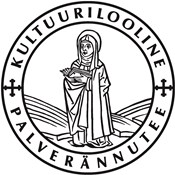The Iru hill fort
Iru hill fort or Iru Linnapära is a 15-m high hill with the area of about 500m2 on the cape by the Pirita River on the eastern border of Tallinn, 8.5 km from Tallinn Old Town.
It is assumed that the Iru hill fort was ancient Estonians’ fortified settlement as well as a trading place. Earliest settlement reaches back to the 3rd millennium B.C., but there was a long disruption in between. New traces of human activity are visible from the 6th century and become especially intensive at the beginning of the Viking era. 9th–10th centuries seem to have been the most active period of usage of the fort. It was also burnt down at some point. The original fortifications were made of wood and sand, later massive stone ridges were established at the ends. A third ridge runs across the hillside, dividing the fort into two parts – a bigger southern and a smaller northern part. Openings in the eastern side of the northern and middle ridge probably used to be old gates.
.jpg)
Archaeological find material shows that the population of the hill fort could have been quite numerous, but it is not clear whether they lived there permanently or only during seasons. If people lived there all year round, there should be burial places nearby, which have not been found, and fields necessary for daily livelihood were located several kilometres from the Iru village. It has therefore been suggested that the narrow western terrace between the river and the hill may have been a harbour site, and the northern area where plenty of finds have been unearthed, was a trade centre. Permanent settlement existed in the village of Iru.
Considering today’s settlement, it may seem a strange location for a trading place, but in ancient time the coastline stretched until Varsaallikas, and the river was much more affluent.

The Bridgettine Convent and settlements at the lower course of Pirita river: Varsaallika farm, Lükati farm and mill, Iru village and manors of Väo and Nehatu. The triangle marks the Iru hill fort. Cutout from Johan Holmberg’s map, 1689. (RA, EAA.1.2.C-III-2).
During the Viking era, trading places were not located on the coast for security reasons, but a few kilometres upstream. As the sea route from Scandinavia to Novgorod ran along the northern coast of Estonia, and Pirita river constituted a traffic stream for many ancient villages, trading was likely to take place here. When the convent was operating, the estuary of Pirita river developed into a full-sized harbour and trading site, offering reloading opportunities to manorial properties by the river.
Besides the usual items found during archaeological excavations in Iru, there are fascinating clay crucibles, indicating bronze casting, an equal-armed bronze brooch, quite rare in Northern Europe, a bone harpoon and a bridoon. Remains of the oldest Estonian crossbeam structure and one of the oldest iron items known in Estonia, an awl, come from here as well.

The Estonian Defence Forces have also played a role in boosting Estonian archaeology. On the initiative of Aarne Michaël Tallgren, the first professor of archaeology at the University of Tartu, archaeologists turned to the Defence Forces for help in the early 1920s, for taking aerial photographs, as pictures taken on ground level were insufficient. The cooperation was successful, resulting in many great photographs (and plans) of strongholds as well as of settlement sites. As early as in 1923, the first pictures arrived at the Centre for Archaeological Researc, to be followed by many more over the years.
Kersti Markus, 2021
Sources
Valter Lang, Muistne Rävala. Muistised, kronoloogia ja maaviljelusliku asustuse kujunemine Loode-Eestis, eriti Pirita jõe alamjooksu piirkonnas, 1-2. Muinasaja teadus 4. Tallinn 1996.
Marika Mägi, „Iru linnusest Püha Birgitta kloostrini. Merenduslik kultuurmaastik Pirita jõe alamjooksul“, Kunstiteaduslikke Uurimusi 4, 2007.
Martin Kuldmägi, Muinaslinnuste uurimislugu Eestis 1920.–1930. aastatel. Tartu Ülikooli Filosoofiateaduskond, Ajaloo ja arheoloogia instituut. Bakalaurusetöö, juhendaja Mirja Ots. Tartu, 2012.
https://register.muinas.ee/public.php?menuID=monument&action=view&id=2609
